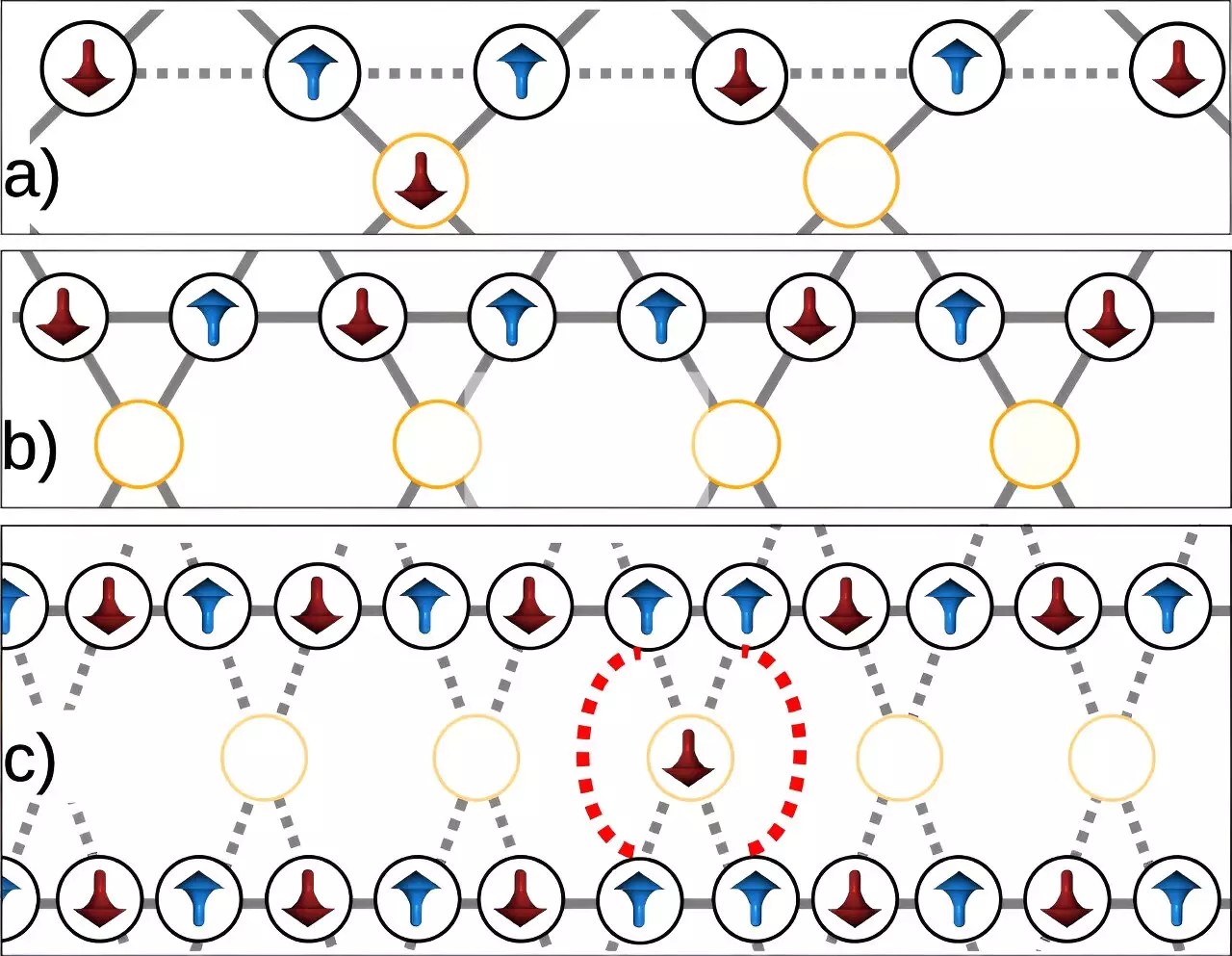In a collaborative effort between Los Alamos National Laboratory and D-Wave Quantum Systems, researchers have conducted experimental research to explore the impact of fluctuations on magnetic ordering in a network of qubits. The study aims to deepen our understanding of quantum behavior by observing and analyzing the behavior of interconnected qubits. The findings have the potential to reduce the cost of quantum processing in devices.
The joint team utilized a D-Wave quantum annealing platform to investigate the interplay of approximately 2,000 qubits within an asymmetric hexagonal lattice. They specifically focused on the impact of factors that induce disorder on magnetic moments, which are small magnetic fields created by the superconducting qubits.
To experiment with entropy, magnetic moments, and disorder, the researchers introduced fluctuations to the system. These fluctuations were dynamic changes in the alignment and arrangement of magnetic moments, driven by both thermal effects associated with temperature and quantum effects resulting from an external magnetic field. By adding these fluctuations, the team aimed to observe how they influenced the mechanisms and physical conditions leading to defect clustering.
The results of the study challenged conventional assumptions about the relationship between disorder and entropy. In some physical conditions, configurations with a clustered distribution of defects emerged as the more likely state. This finding contradicts the prevailing expectation that configurations with higher entropy exhibit greater disorder. In other words, the researchers demonstrated in a quantum system that ordered states characterized by specific patterns can emerge, even when seemingly disorder-inducing factors are present.
The idea that order can be promoted by adding both thermal and quantum fluctuations may seem paradoxical, but the researchers were able to observe how these fluctuations influenced the formation of defect clusters. This insight can lead to improvements in the construction of quantum systems. By understanding how fluctuations interact with the system and promote ordering, researchers can devise strategies to build more efficient quantum devices.
As researchers continue to develop the D-Wave quantum platform and improve experimental capabilities, future studies can focus uniquely on the role of quantum fluctuations. By disentangling quantum fluctuations from thermal fluctuations, scientists can gain a deeper understanding of their individual contribution to the behavior of quantum systems. This knowledge will pave the way for further advancements in quantum technology and more precise control over quantum effects.
The experimental findings from Los Alamos National Laboratory and D-Wave Quantum Systems shed light on the paradoxical role of fluctuations in inducing magnetic ordering on a network of qubits. Contrary to conventional assumptions, the study revealed that specific patterns can emerge even in the presence of seemingly disorder-inducing factors. This insight opens up new possibilities for designing and constructing more efficient quantum systems. As research and technological capabilities continue to advance, the understanding of fluctuations in quantum systems will play a crucial role in harnessing the potential of quantum computing.


Leave a Reply